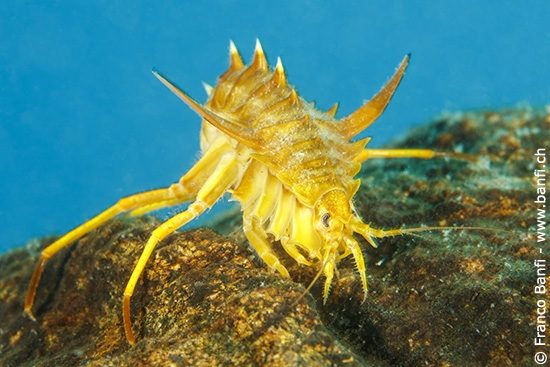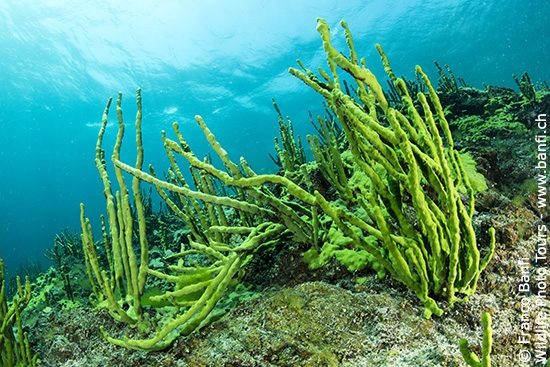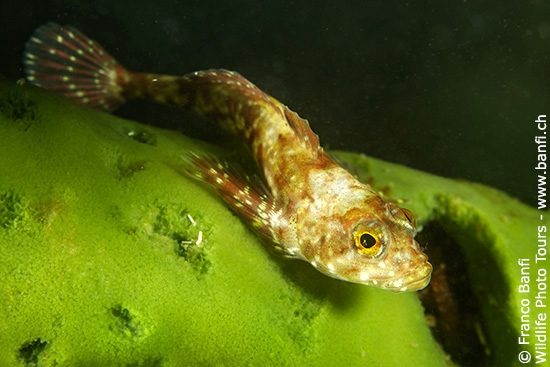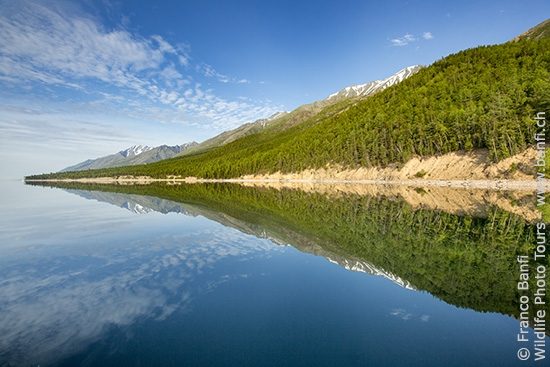







Last summer I went to the Baikal Lake in Russia and lead a group of passionate cold-water divers and amateur underwater photographers on what became one of the most interesting expeditions I have done in recent years.
Even before the trip Lake Baikal, located in southern Siberia, tremendously stands out for its superlatives: it is the deepest (1,642 metres), the largest per volume and the oldest freshwater lake on Earth, existing for more than 25 million years. It also contains about 20 percent of the fresh, non-frozen water on the planet.
I packed my new XR Extended Range Mares gear, which was excellent for facing the frigid weather conditions in Siberia (with an average water temperature of between 4-6 °C).
Diving in the Baikal was different to anything I’ve ever dived so far. Not so much because of the low temperature, which I’m used to because I often dive in lakes in the Alps and other chilly waters, but because of the clarity of the azure waters, cliffs, deep walls and omnipresent neon green lights that make a divers’ heart beat faster!
Diving in the Baikal is only recommended with dry suits and for divers who are not afraid of cold water. From one point of view, the Baikal is considered technical diving. One of the main issues there is the cold temperature, not only for divers, but also for their scuba gear which is subject to particular, uncommon operating conditions. These same conditions have to be faced by photographic gear – and beyond the known problems with battery endurance one must consider the underwater housings and strobes, which must be fitted with specific devices.
Lake Baikal and its surrounding environment have unique flora and fauna: about two-thirds of some 1,500 animals and 1,000 plant species are endemic. Diving there was like landing on a strange, new planet for me. The large green sponges grow everywhere like a forest, on a green base covered by different soft mosses and lichens, like nothing that I have ever seen before. Many of the large sponges were colonised by small, psychedelically coloured anthropods with far too many legs.
Because the lake has steadily become deeper, the animals have had plenty of time to adapt. At a depth of 1.6km a high diversity of species can be found. One of the only two occurring freshwater seal species of the world lives in Lake Baikal: the Nerpa, also called the Baikal seal. The Omul, Coregonus migratorius, a whitefish species of the salmon family and the Golomjanka, a fatty fish, which is the deepest living freshwater fish on Earth also live there. These fish have managed to preserve eyesight even at the greatest depths, although they only see in black and white.
The lake counts 52 species of fish and 27 of them are endemic to the lake. There are more than 350 species and subspecies of amphipods and all are
endemic. They are exceptionally diverse in ecology and appearance, ranging from the pelagic Macrohectopus to the relatively large deep-water Abyssogammarus. The "gigantism" of some Baikal amphipods, which has been compared to that seen in Antarctic amphipods, has been linked to the high level of dissolved oxygen in the lake.
 Franco and Sabrina
Franco and Sabrina 4th January 2017
4th January 2017 Lago Bajkal
Lago Bajkal 





